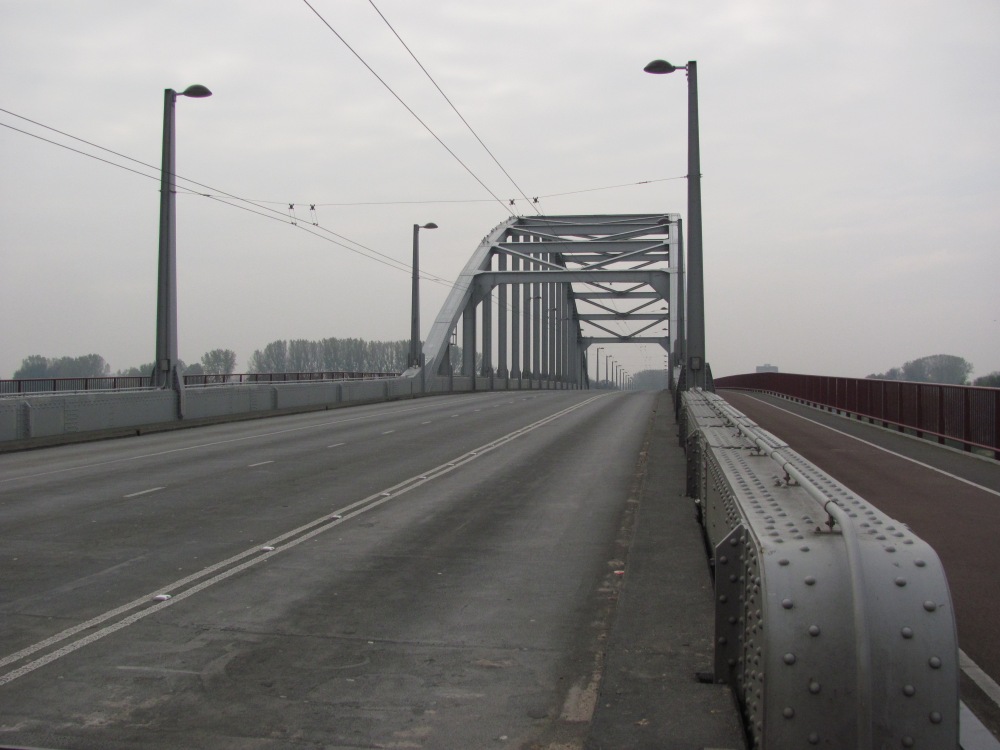
It is that time of year again when our thoughts turn to the narrow corridor running from the Belgian border up through the southern Netherlands towards the city of Arnhem; the ground where Operation Market Garden took place. Montgomery’s bold plan from the autumn of 1944 would take ground troops from XXX Corps up that narrow corridor and across a series of bridges to the final one at Arnhem. The city, located at a juncture with German, would allow a spring-board into the Rhineland and a way towards the heart of Nazi Germany. But such a bold plan called for bold action, which was not always seen, and the Germans ability to react both quickly and powerfully proved, immortally, that Arnhem was just a ‘bridge too far’.

Visiting the Arnhem battlefields is a fascinating and moving experience. The famous road bridge in the city where 2nd Battalion Parachute Regiment, and other supporting elements from 1st Airborne Division, held on for so long was bombed after Market Garden and destroyed. But the original bridge supports can be seen and the bridge is a good copy of the one here in 1944. Close by is a small visitors centre, which is well worth a visit.

The real battle for Arnhem was in nearby Oosterbeek, as the majority of 1st Airborne Division units fought here among the streets and houses of this quiet, middle-class suburb. Today you do not have to walk very far in the area to find traces of war: bullet and mortar impact marks on buildings, railings chopped up by shrapnel and machine-gun fire. In the woods close to Oosterbeek foxholes and mortar positions survive, and in the heart of it is the Hartenstein Hotel, then the Airborne HQ and now the main Arnhem Museum.

The Arnhem Oosterbeek War Cemetery is located close to where the heavy fighting took place in the suburbs. It was chosen as the main burial ground after the war, and graves were moved in from a wide area. As you enter the plots left and right are predominantly 1st Airborne Division, and the large number of Glider Pilot Regiment graves indicates their combat role at Arnhem, as well as flying men in. To the rear are the graves of some men from XXX Corps who reached the ground beyond Nijmegen and ones from 1945 who died in the final, often forgotten, Battle of Arnhem. It is a quiet place, where it is not hard to reflect on the cost for the freedom we enjoy today.

Beyond Arnhem are the battlefields of the narrow corridor: the ground where the infantry and armoured units of XXX Corps supported by so many others fought their way up, section by section, bridge by bridge, town by town, until they crossed into the ‘island’ beyond Nijmegen and men from 5th Duke or Cornwall’s Light Infantry organised the ‘Driel dash’ which got them to and across the Lower Rhine to finally meet up with the Airborne. This is a much wider area of battlefields that few ever visit, but starting at Joe’s Bridge on the Dutch/Belgian border, you can still pretty much follow the route up through the main towns of Eindhoeven to Nijmegen. It is worth steering off route to see the fantastic museums at Overloon and Groesbeek, and also taking time to see the various British cemeteries. One of the most evocative bridges on this route is Grave Bridge; the original that was there in 1944 and some interesting bunkers and memorials close by.

Arnhem was a battle of nine days and it remains one of the most iconic British battles of the Second World War: more than seventy years later it still captures our imagination. There is much to explore in this area of the Netherlands, to visit and understand the events here in 1944. Work by the excellent Liberation Route has made this battlefield more accessible, and there some useful guidebooks.
Picture Arnhem Drop Zone must be Ede Ginkel Heath Dropzone. Objective of operation Market Garden was not Arnhem as a spring-board to the heart of Germany. The real objeective was a bridgehead between Arnhem and the IJsselmeer. Later that could be a spring-board to the east. Arnhem was not a bridge too far. For Montgomery operation Market Garden was a bridge too far. For the British 2nd Army that bridgehead was a bridge too far. For 1st Airborne Division the forming of a bridgehead between the Westerbouwing and Westervoort with at least one bridge was a bridge too far. The British did not hold the bridge at Arnhem. They defended positions in buildins on both sides of the northern ramp to the bridge. Driel dash was a failure. 5 DCLI ould not bring the ducks with supplies to the men in Oosterbeek. Battle at Arnhem did not last for nine days: 17 -26 September. Airlandingoperation Market north of the Lower-Rhine failed on the 19th of September. The British soldiers fled or withdrew to Oosterbeek and stayed during this aftermath of the battle near and in Arnhem there till 25 September. Two days in and near Arnhem. A week in Oosterbeek.
LikeLike